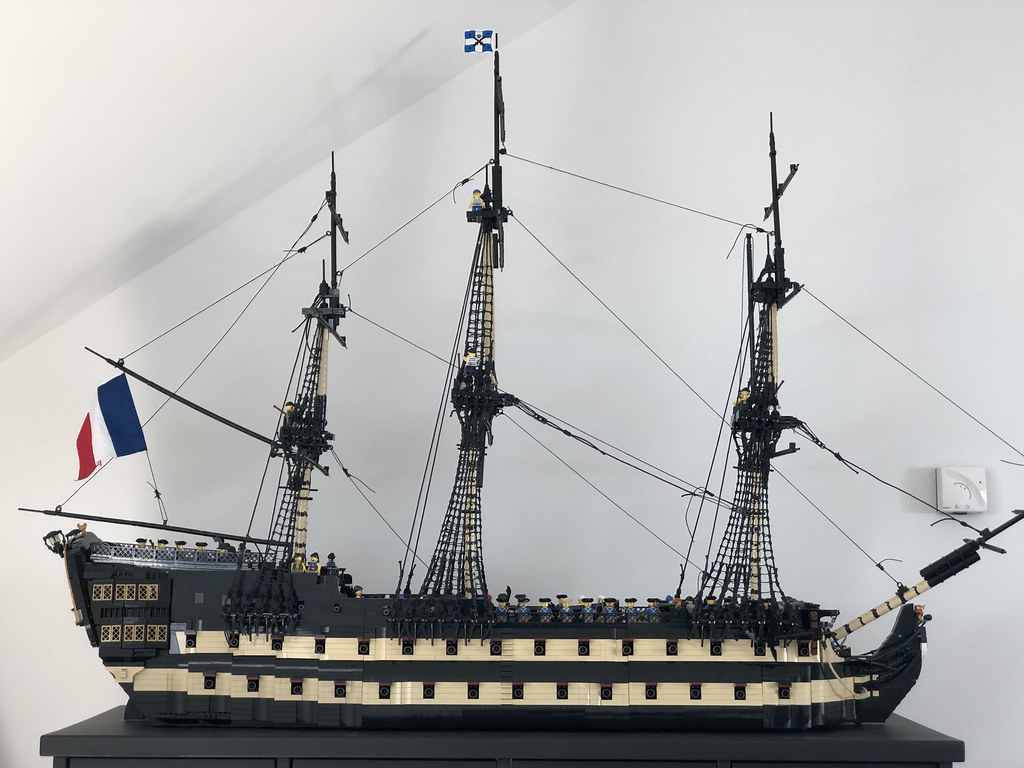A fair few of the Dutch builders that I occasionally hang out with are very much into building heavy-duty trucks and construction equipment, such as cranes or mining excavators. And they tend to like to build them BIG. I’ve dabbled a bit in the genre, but I’ve always been somewhat the odd one out in our little group, mainly building smaller models. And I’ve gone progressively smaller: in recent years more and more of my models are scaled for minifigures. I rarely have the time or patience to build really big things. I am also running out of space to display large models.
If you take a big crane and build it to a small scale, you still end up with a fairly substantial model, though. Case in point: my Liebherr LTM-1350 mobile crane, as operated by the Dutch company Mammoet (Mammoth). Despite its relatively small scale, there is just enough room for some functionality. For instance, the crane’s outriggers and boom can extend and it has working steering on five of its six axles. When fully extended, its boom reaches a height of close to a metre (about three feet). Furthermore, cranes like this may be mobile, but they do require a fleet of support vehicles. This includes a separate truck to carry its counter-weights. The crane’s crew also tends to have a small “pool car” to drive around. If the crane is in transit, an escort van usually accompanies the convoy. The small scale meant I could build all of them.




